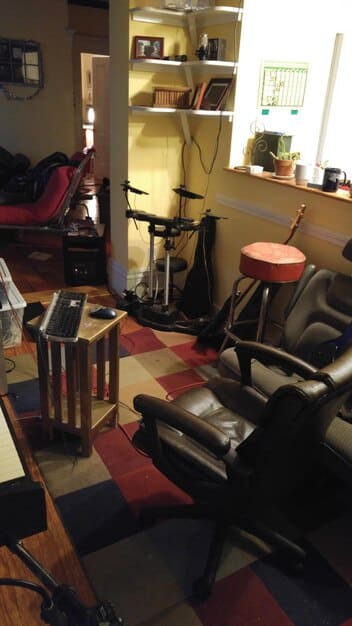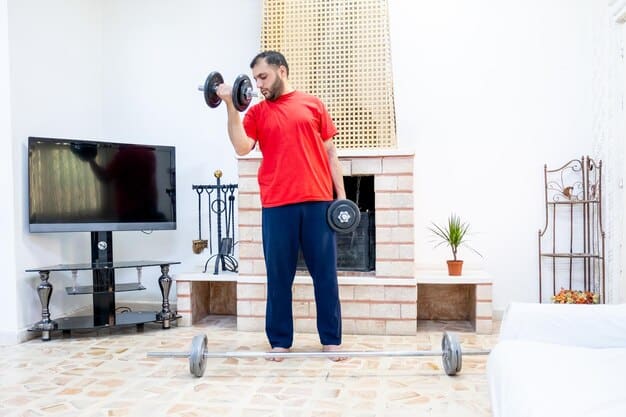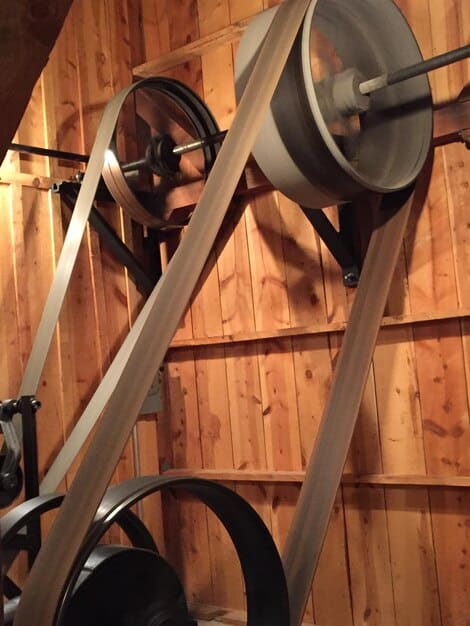Build Your Dream Home Gym on a Budget: Save Up to 40%

Building a home gym on a budget is achievable by prioritizing essential equipment, exploring second-hand options, and utilizing DIY solutions, potentially saving you up to 40% compared to commercial gym memberships.
Ready to ditch expensive gym memberships and create your own workout haven? This the ultimate guide to building a home gym on a budget: save up to 40% by following our tips and tricks!
Why Build a Home Gym? The Benefits Unveiled
Creating a home gym offers numerous advantages over traditional gym memberships. From convenience and time-saving to cost-effectiveness, a personalized workout space can significantly enhance your fitness journey. Let’s explore why building a home gym might be the perfect choice for you.
Unmatched Convenience and Time Savings
One of the most appealing aspects of a home gym is the sheer convenience it offers. No more commuting to the gym, waiting for equipment, or adhering to specific opening hours. Work out whenever you want, for as long as you want.
Cost-Effective Solution in the Long Run
While the initial investment might seem daunting, a home gym can save you money in the long run. Consider the ongoing costs of gym memberships, gas, and the occasional protein shake purchased on-site. Over time, a home gym proves to be a budget-friendly alternative.

Personalized Workout Environment
A home gym allows you to create a workout environment that perfectly suits your preferences. Choose your favorite music, adjust the lighting, and decorate the space to keep you motivated and engaged. The possibilities are endless.
- Avoid gym crowds and waiting times
- Workout at your own pace and schedule
- Customize the equipment and environment to your liking
In conclusion, a home gym offers unparalleled convenience, cost savings, and personalization. It’s a worthwhile investment for anyone serious about their fitness goals and looking for a more efficient and enjoyable workout experience.
Assessing Your Space and Needs: The Foundation of Your Home Gym
Before you start purchasing equipment, it’s crucial to assess your available space and identify your specific fitness needs. This preliminary step will ensure you create a functional and effective home gym that aligns with your goals and budget.
Evaluating Available Space
Begin by carefully evaluating the space you have available. Consider the dimensions, layout, and any potential limitations. A spare room, garage, or even a corner of your living room can be transformed into a functional workout area.
Defining Your Fitness Goals
What are your fitness goals? Do you want to build muscle, improve cardiovascular health, or increase flexibility? Your goals will determine the type of equipment you need. For strength training, weights and a bench might be essential. For cardio, a treadmill or stationary bike could be ideal.
Determining Essential Equipment
Based on your space and fitness goals, create a list of essential equipment. Prioritize items that offer versatility and maximum value for your investment. Start with the basics and gradually add more specialized equipment as your budget allows.
When planning your home gym, think about the surface types or protection you want to implement to avoid any possible damages.
- Measure your space accurately to avoid wasted purchases
- Prioritize equipment that aligns with your fitness goals
- Consider multi-functional equipment to maximize space
In summary, assessing your space and needs is a critical first step in building a home gym. By carefully evaluating these factors, you can create a personalized workout space that is both functional and cost-effective.
Budget-Friendly Equipment Options: Maximize Your Investment
Building a home gym doesn’t have to break the bank. With some creativity and research, you can find affordable equipment options that deliver excellent results. Let’s explore some budget-friendly alternatives that will help you achieve your fitness goals without exceeding your budget.
Exploring Second-Hand Marketplaces
Online marketplaces like Craigslist, Facebook Marketplace, and eBay are goldmines for finding used gym equipment at discounted prices. You can often find high-quality items in good condition for a fraction of the retail price. Always inspect the equipment thoroughly before purchasing.
Utilizing DIY Solutions
DIY solutions can significantly reduce the cost of your home gym. For example, you can create your own plyometric box, sandbags, or even a weight rack using readily available materials. Online tutorials provide step-by-step instructions for building various fitness equipment items.

Essential Equipment on a Budget
Focus on purchasing essential equipment that provides versatility and maximum value. Consider adjustable dumbbells, resistance bands, a yoga mat, and a jump rope. These items are relatively inexpensive and can be used for a wide range of exercises.
- Search for used equipment in good condition
- Explore DIY solutions for cost-effective alternatives
- Prioritize versatile equipment for diverse workouts
In conclusion, budget-friendly equipment options allow you to build a home gym without overspending. By exploring second-hand marketplaces, utilizing DIY solutions, and prioritizing essential equipment, you can create a functional and effective workout space on a budget.
DIY Projects to Enhance Your Home Gym: Creative and Economical
DIY projects are a fantastic way to personalize your home gym while saving money. From building equipment to creating storage solutions, these creative and economical projects will add a unique touch to your workout space. Let’s explore some DIY ideas that will enhance your home gym experience.
Building Your Own Weight Rack
A weight rack is an essential piece of equipment for any home gym. Building your own weight rack using wooden planks and metal pipes can save you hundreds of dollars. Follow online tutorials for step-by-step instructions and safety guidelines.
Creating a Plyometric Box
A plyometric box is a versatile tool for improving explosive power and agility. You can easily build your own plyometric box using plywood and basic carpentry tools. Customize the height to suit your fitness level and training goals.
Optimizing space for your home gym by getting creative
Proper storage is essential for keeping your home gym organized and clutter-free. Build shelves, racks, or storage containers using recycled materials. This not only saves money but also adds a unique and eco-friendly touch to your workout space.
- Customize your equipment to your fitness goals
- Build storage solutions with creative and eco-friendly materials
- Be sure to follow instructionals and safety guidelines
In summary, DIY projects are a fun and cost-effective way to enhance your home gym. By building equipment and creating storage solutions, you can personalize your workout space and save money while achieving your fitness goals.
Maximizing Space in a Small Home Gym: Smart Storage and Layout Tips
Even with limited space, you can create a functional and efficient home gym. Smart storage solutions and a well-planned layout are essential for maximizing space and creating a comfortable workout environment. Let’s explore some tips that will help you make the most of your small home gym.
Utilizing Wall Space
Make use of vertical space by installing shelves, racks, or pegboards on the walls. This will free up floor space and keep your equipment organized. Store lighter items like resistance bands, yoga mats, and foam rollers on wall-mounted storage solutions.
Multi-Functional Equipment
Choose equipment that serves multiple purposes. For example, an adjustable bench can be used for various strength training exercises. Resistance bands can be used for both upper and lower body workouts. Multi-functional equipment maximizes space and reduces clutter.
Mirror, mirror on the wall
Good lighting can transform a small space and enhance your workout motivation. Install bright overhead lighting and consider adding a mirror to make the space feel larger and more open. Mirrors also allow you to monitor your form and technique during exercises.
- Utilize wall space to maximize storage
- Prioritize multi-functional equipment
- Light and mirror, always good in small spaces
In conclusion, maximizing space in a small home gym requires smart storage solutions and a well-planned layout. By utilizing wall space, choosing multi-functional equipment, and optimizing lighting, you can create a functional and comfortable workout environment, no matter the size of your space.
Motivation and Consistency: Keeping Your Home Gym Routine Engaging
Building a home gym is just the first step. To achieve your fitness goals, you need to stay motivated and consistent with your workout routine. Let’s explore some strategies for keeping your home gym routine engaging and preventing burnout.
Setting Realistic Goals
Start by setting realistic and achievable fitness goals. Break down your long-term goals into smaller, manageable steps. Celebrate your progress along the way to stay motivated. Track your workouts and monitor your achievements to visualize your success.
Creating a Workout Schedule
Develop a workout schedule and stick to it. Treat your workouts like important appointments and prioritize them in your daily routine. Consistency is key to achieving long-term fitness results. Find a workout time that works best for you and commit to it.
Listening to your body
To avoid burnout, mix up your workout routine and try new exercises. Experiment with different training styles, such as HIIT, circuit training, or yoga. This will keep your workouts fresh and exciting. Introduce new equipment or DIY projects to add variety to your home gym.
- Set realistic goals to motivate you
- Make yourself a workout timetable
- Switch up the sets that you do and enjoy
In summary, staying motivated and consistent is crucial for achieving success with your home gym routine. By setting realistic goals, creating a workout schedule, and mixing up your workouts, you can keep your routine engaging and prevent burnout, ensuring long-term fitness success.
| Key Point | Brief Description |
|---|---|
| 💪 Essential Equipment | Focus on versatile items like dumbbells, bands, and mats. |
| 💰 Budget Options | Explore used equipment and DIY alternatives to save money. |
| 🧮 Space Maximization | Optimize layout and storage in small spaces with wall mounts and multi-functional items. |
| 📅 Consistency | Set realistic goals, create a schedule, and vary workouts to stay motivated. |
FAQ Section
▼
Adjustable dumbbells are highly versatile for strength training. Pair them with a good bench for chest presses and back support. Resistance bands provide a low-impact supplement to most exercises, offering versatility.
▼
Online marketplaces like Facebook Marketplace are great for used gear. DIY solutions are also effective. Basic equipment like mats and skipping ropes are usually sold for a low price in popular retailer shops.
▼
Use vertical space with wall-mounted shelves and racks. Multi-functional equipment, like adjustable benches, reduces clutter. Mirrors help to create the illusion of extra space, as well as allowing you to check your form.
▼
Set realistic, achievable goals to track. Develop a workout schedule and treat it like an important appointment. Introducing variety by switching up your sets, or the equipment you use to stop you from becoming discouraged.
▼
Yes, with the right equipment and dedication, a home gym can be very effective. Plus, you might even save money. You have full control over your routine and equipment as well as the music you listen to.
Conclusion
Building a home gym on a budget is entirely possible with careful planning and resourcefulness. By assessing your needs, exploring budget-friendly options, and staying motivated, you can create a personalized workout space that helps you achieve your fitness goals without breaking the bank.





